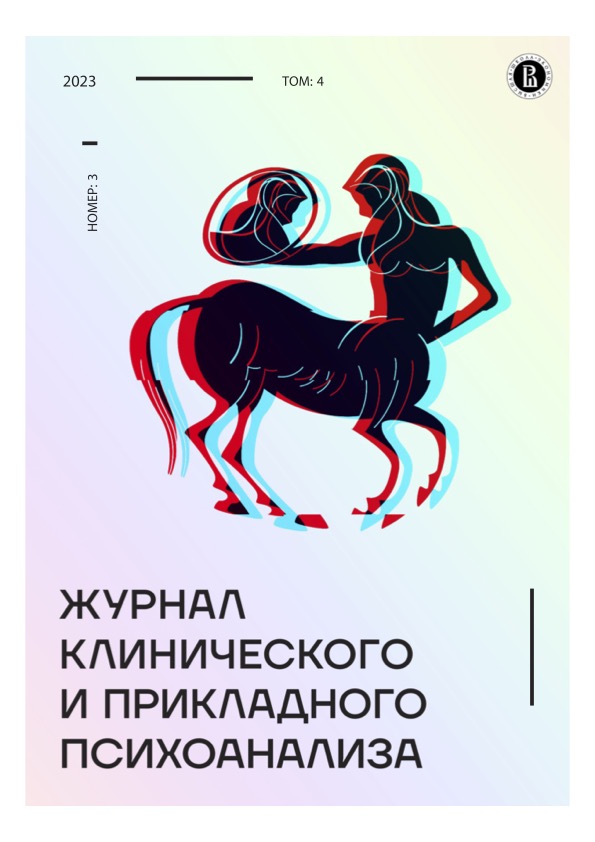Alterity in psychoanalysis. The destiny of alterity in F. Ozon's film «Double Lover»
Psychoanalysis of cinema
Abstract
This work is a psychoanalytic study of the concept of alterity. The author starts from the theory of René Roussillon, who considered alterity in the context of the infant's contact with the mother, linking it with the process of symbolization. Modern psychoanalysts have traced the trajectory of alterity from primary to symbolic. The analysis of the film by Francois Ozon "Double Lover" was carried out from the point of view of the formation and idea of alterity in the subject. Primary alterity in the film is illustrated by the phenomenon and history of the existence of a parasitic twin in the body of the main character, Chloe. Imaginary alterity as a variant of transitional alterity is also presented in the film proposed for analysis. The author described an example of imaginary alterity, accepted in the cultural tradition, and also several examples from the film, indicating splitting, the formation of delirium and the imaginary reality inherent in psychosis. Symbolic alterity in the film fails, as it is the result of failures in the previous stages of the development of the main character. The psychotherapist's refusal from the symbolic, that is, from treating Chloe with the help of words alone, and his transition to actions – to sexual connection – led to negative consequences.

